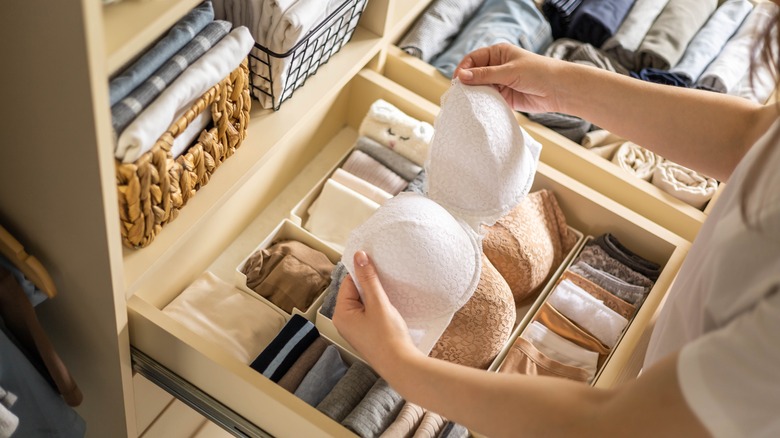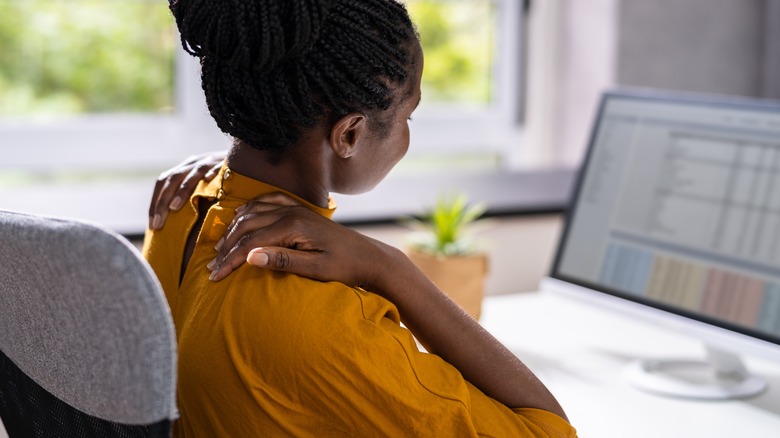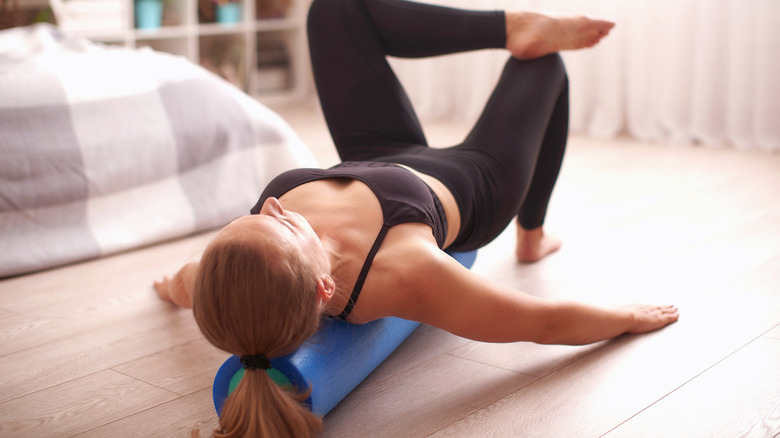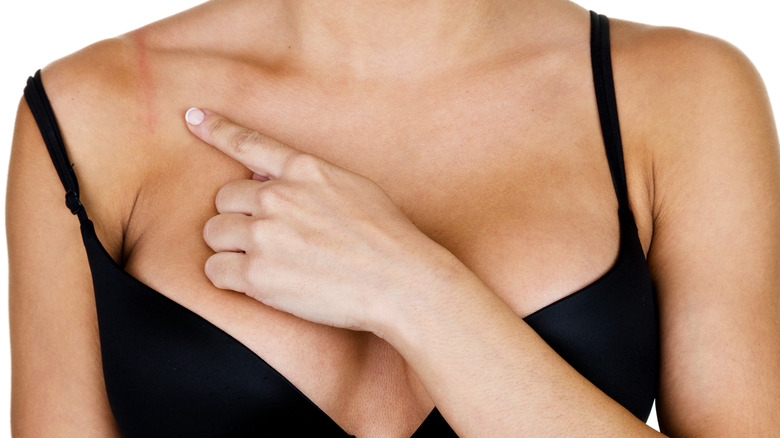Our Doctor Shares The One Big Side Effect Of Not Wearing A Bra
For thousands of years, women have sought out ways to support their breasts. Although the modern bra as we know it didn't emerge until the early 20th century, ancient civilizations used various means of breast support. Women in ancient Greece, for example, wore a band of cloth around their chests to control movement while exercising. In medieval times, corsets were used to lift and shape breasts. Later, in the 19th century, the first bra prototypes were created, and by the early 20th century, the modern bra was born.
However, wearing (or not wearing) a bra is not just about fashion or appearance. While it's a personal choice that's neither right nor wrong, going braless could lead to some uncomfortable side effects, such as back pain and posture changes throughout the spine. Knowing the potential consequences can help you make better-informed decisions about your bra-wearing habits. Dr. Heather Jeffcoat spoke exclusively with Health Digest to explain the potential impact of not wearing a bra and provide tips to help alleviate these issues.
The impact of going braless on back pain and posture
Heather Jeffcoat, DPT, CEO at Fusion Wellness & Femina Physical Therapy, defined the critical link between braless living and back pain exclusively for Health Digest.
"Posture is all about how you hold yourself over your center of gravity," says Dr. Jeffcoat. "If your sizing is a C cup or higher, there will be more pull in the front that could lead to strain on your upper back and neck, and postural changes throughout your spine."
The strain manifests as a deep ache between the shoulder blades.
"With increased weight to carry in the front, there will be a constant pull to round your mid and upper back, pulling you into a postural kyphosis," Dr. Jeffcoat explains. "This pull will also create a decrease in flexibility of your pec (chest) muscles, further accentuating the rounding of the mid and upper back."
If left unaddressed, this discomfort can progress into more severe neck and shoulder pain, exacerbating chronic tension headaches. She added that while someone with a smaller cup size could experience this type of pain, it is likelier due to factors other than not wearing a bra.
Strategies for maintaining postural strength and comfort without wearing a bra
Dr. Heather Jeffcoat understands that the human body is continuously adjusting to pressures from both inside and out. "Our body is constantly trying to manage the forces that are placed upon it, whether it be keeping us in balance as we are walking or playing sports, or adjusting to external forces that may push us out of this balance," mentioning gravity as an example of the latter.
"Since our body needs to counteract the forces that are placed upon it, I recommend to my patients, if they prefer to not wear a bra, that they keep their postural strength at its highest level while reducing tightness in the front of their body," she advises. "This means they are routinely doing core work, back extension exercises, and targeted midback and shoulder strengthening such as rows and shoulder external rotation exercises."
Dr. Jeffcoat suggests stretching to address any tightness in the front of your body, especially in your pectoral muscles. One great exercise is lying on a foam roller with your arms outstretched to the sides and taking slow, deep breaths. This simple but effective movement can promote flexibility and reduce tension. By combining strength-building exercises with targeted stretches, you'll be taking a holistic approach to maintaining optimal musculoskeletal well-being.
The crucial role of fit and support in bra choices
When it comes to taking care of our back and posture, choosing the proper undergarments is critical. If you opt for a bra, the way it fits and supports you really matters when it comes to your musculoskeletal system. If you wear one that doesn't fit well, it can lead to issues like poor posture, back and neck pain, and even numbness in your fingers due to compressed nerves in your shoulders, according to Patient.info.
It's not just about whether or not to wear a bra, but also making sure we find the right fit and support that prioritizes our comfort and alignment. Whether you prefer the support of a well-fitted bra or you're all about the braless life, what matters most is that you make choices that feel good and contribute to your long-term health. By understanding the potential consequences and taking that into account, you can make mindful choices that align with your health and fashion priorities.




